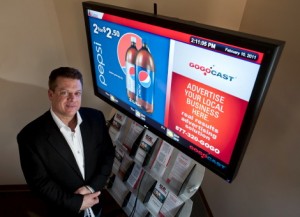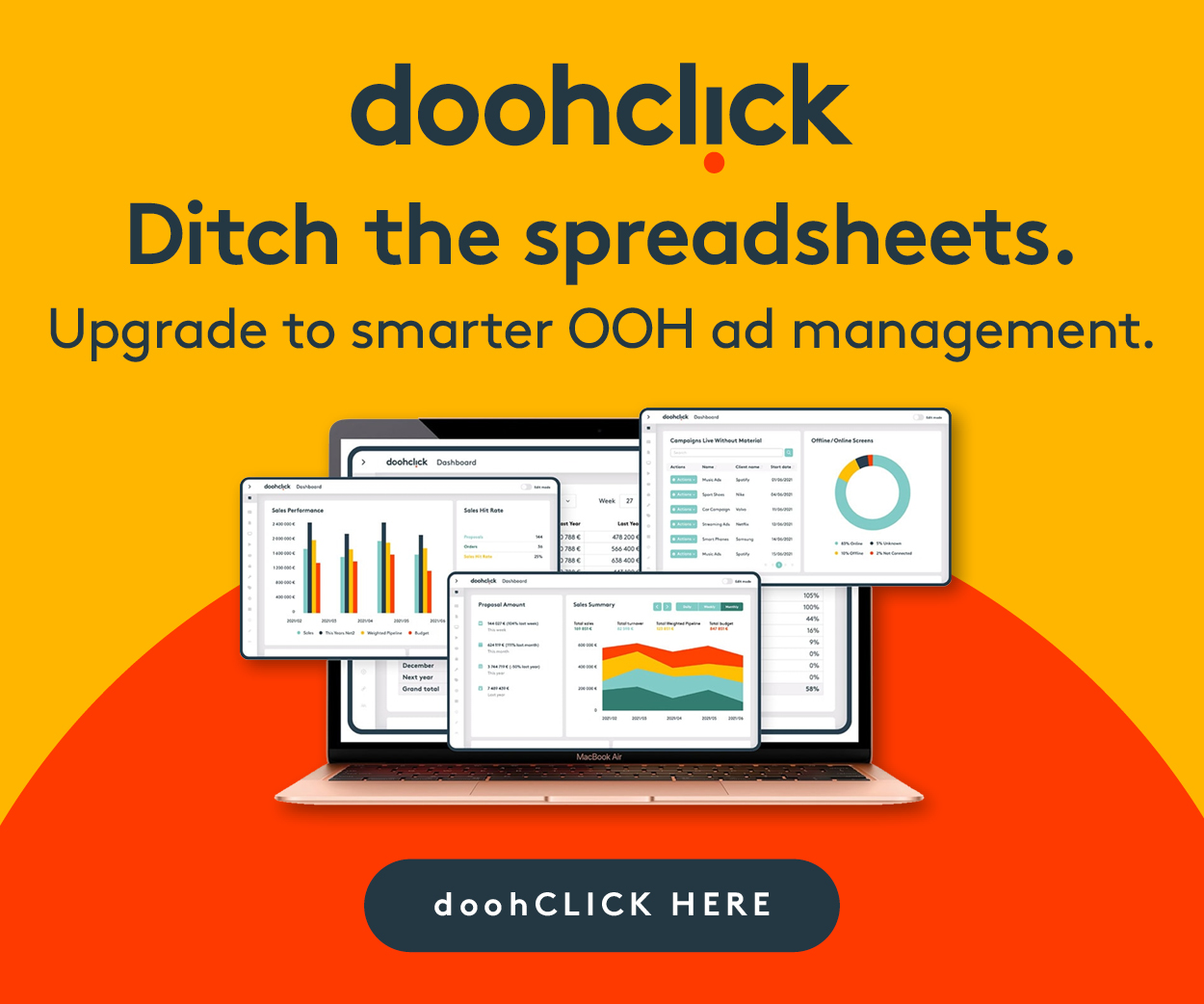Gail Chiasson, North American Editor
This month, we welcome David Paolo, CEO, GoGo Cast Inc., Cranston, Rhode Island.
- Your company has an interesting name. Why was it chosen? Do you find it a strong brand name and why?
Our company name is very interesting and always generates an inquiry from people to learn more. Our name is derived from the broadcasting business and although we are specifically a narrowcaster, our screens are for people that are mobile or on the ‘go’, hence the name GoGo Cast.
- You’ve been in business for close to 20 years, starting several companies before GoGo Cast. What did you learn from these, both the successes and failures, that you now apply to sustain GoGo Cast?
Being a serial entrepreneur, or for lack of a better word, a ‘start-up junkie’, I have learned a great deal about the pitfalls of start-ups and how to best avoid those for a greater chance of success. Where most start-ups fail is in the planning, capitalization, branding and marketing of their products. Most inventors can create a good product, even a unique product, but bringing it to market and making it a success is a very different animal.
What I have learned is to have a good business plan and road map that details the company’s need for capital and its ability to scale as the demand for the product grows. Being undercapitalized is almost always a recipe for failure. Having a fantastic management team in place and creating a strong brand with effective marketing for the company and the product will drive demand and create scale, which in turn drives success.
- You are currently focused on two specific areas: convenience stores and pharmacies. Are you limiting GoGo Cast to these two sectors? Tell use about each of these and your expectations for growth in each.
After several years of research and development of industry specific content and tools, we have found that the convenience and pharmacy spaces were the most underserved, and that has created the most opportunity. In an average week, a convenience store will see roughly 5,000 visitors. Our traffic is significantly higher since we only put screens in stores with 7,000 or more visitors weekly. One of our convenience stores averages 30k in weekly visitors.
Whereas the web measures exposure per click or impression, our CPM is based on foot traffic. We monetize according to the people going into the stores. Today’s traffic is on the go, and we have the platform to capture the attention of those on-the-go movers out there.
- You bought a company called Digital in Motion in October, 2010. What did this give you? Can you tell us how much you paid, or how you priced the transaction?
The terms of that transaction are confidential but I can say the purchase was a combination of cash and stock. Digital Media was able to secure an exclusive contract for the independent pharmacy association, but did not have the adequate resources to fulfill the agreement, which made it a natural acquisition target. GoGo Cast was among several companies looking at this transaction, and was successful in putting together a package that made sense for both parties. We have already begun deploying in independent pharmacies in New York, New Jersey, and Pennsylvania, and will continue to execute on the agreement throughout 2011 and beyond.
- Some (or all?) of your screens show news, weather and sports. Do either the convenience store or the pharmacy sectors also have any original content? If so, what, and who provides same? If not, why not? And what percentage of a loop is advertising vs content?
We use all the standard protocols the web supports, so any website content or rss/mrss data can be easily shown on our screens. We even offer ‘MyGoGoCast’, where individual screen location owners can post their own unique content relevant to their store and their community.
New technology takes time to become accepted, and our model allows new location owners to move at their own pace, layering in GoGo Cast features as they are ready, and as their customers request it.
And what percentage of a loop is advertising vs content? It changes depending on the ad inventory sold but generally it is a 70-30 split, ads to content.
- I notice that you offer stores the ability to blacklist content, filtering out products or services that they consider inappropriate or preventing rivals from infiltrating their stores with competing advertising. Is this something that you found necessary to put into practice? Why – and how often is it actually used?
Absolutely. Our platform gives the ability for each brand to control what is shown on the screen, hence making their brand the superior brand. We use it all the time. It is built into our data model through keywords and content tagging.
- Much of your business is in the eastern U.S.. What are your plans for expansion nationally and internationally?
As the need arises we will evaluate each opportunity as it applies to our business’ growth.
- Who sells advertising for you? Do you also use aggregators?
We started off with aggregators, but what it really comes down to is who buys the ad slots on our network. Lately, the national advertisers have stepped up and are currently purchasing inventory wholesale.
- You offer both a variety of screen sizes and kiosks. Where are each used? What do your kiosks offer? And whose management software backs your networks?
We are mostly focused on delivering 42” screens to convenience and pharmacy locations. Our engineering staff is made up of the some of the same engineers that developed the Netscape Client and Server software. The majority of our development team is based out of Silicon Valley. We use our own commercial software to control and deliver content to the screens. We developed our own web.
- What do you think about 3D, couponing, mobile interactivity, other new technological offerings?
3D isn’t at the level where consumers on the go will use it. There are some creative 3D effects today but I don’t see advertisers paying a premium for them yet.
We invested a significant amount of capital in mobile technology. In the coming months we will be bringing to market the most advanced integrated solution to the digital signage space to date. We will be incorporating social media, geo-fencing couponing and full vendor portal campaign management for manufacturers, convenience store and pharmacy chains.
- Tell us about the research and analysis that you provide for advertisers.
We give them weekly traffic counts, play counts, audience demographics and total sales.
- Are you interested in a) raising venture capital in the near future; and b) acquiring further companies – or being acquired?
We are a very well capitalized company and do not have a current need for new equity. We do, though, have several large deals in the pipeline that, should they close, would require additional capital. We are always looking for business combinations that make sense, whether we are the acquirer or to be acquired at the appropriate time for a meaningful valuation.






Follow DailyDOOH